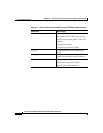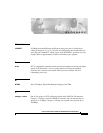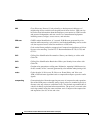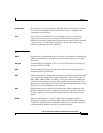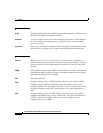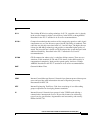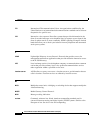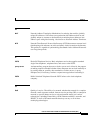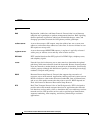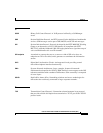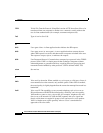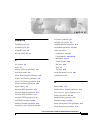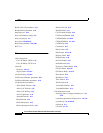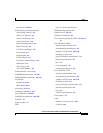
Glossary
GL-8
Cisco IP Phone Models 7905G and 7912G Administrator Guide (SIP)
OL-4277-01
R
RAS
Registration, Admission, and Status Protocol. Protocol that is used between
endpoints and a gatekeeper to perform management functions. RAS signalling
function performs registration, admissions, bandwidth changes, status, and
disengage procedures between the VoIP gateway and the gatekeeper.
redirect server
A server that accepts a SIP request, maps the address into zero or more new
addresses, and returns these addresses to the client. It does not initiate its own
SIP request nor accept calls.
registrar server
A server that accepts REGISTER requests. A registrar is typically colocated
with a proxy or redirect server and may offer location services.
RFC 2833
IETF standard that describes RTP payload for DTMF digits, telephony tones,
and telephony signals.
router
Network layer device that uses one or more metrics to determine the optimal
path along which network traffic should be forwarded. Routers forward packets
from one network to another based on network layer information. Occasionally
called a gateway (although this definition of gateway is becoming increasingly
outdated). Compare with gateway.
RSVP
Resource Reservation Protocol. Protocol that supports the reservation of
resources across an IP network. Applications running on IP end systems can use
RSVP to indicate to other nodes the nature (bandwidth, jitter, maximum burst,
and so on) of the packet streams that they want to receive. RSVP depends on
IPv6. Also known as Resource Reservation Setup Protocol.
RTP
Real-Time Transport Protocol. One of the IPv6 protocols. RTP is designed to
provide end-to-end network transport functions for applications that transmit
real-time data, such as audio, video, or simulation data, over multicast or unicast
network services. RTP provides services such as payload type identification,
sequence numbering, time stamping, and delivery monitoring to real-time
applications.



